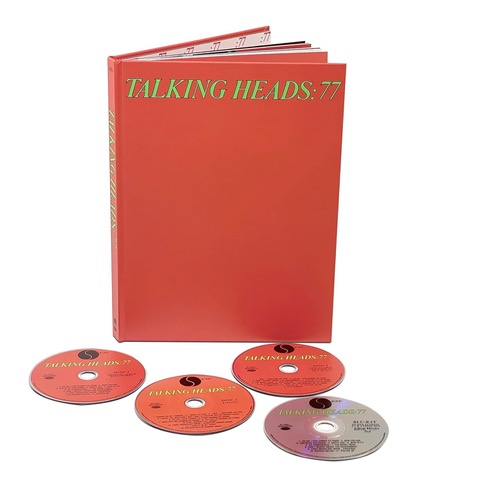Talking Heads:77 ranks among the most striking, fully realized, and important debut albums of the punk/new wave era that spawned it, though it doesn’t particularly sound like punk or new wave. In fact, it sounds like nothing else, before or since, unless you count the group’s own subsequent LPs.
That’s thanks largely to the idiosyncratic singing of Talking Heads’ lead vocalist, guitarist, and primary songwriter David Byrne, who often comes across on the record as a musically gifted mental hospital escapee. Also playing key roles are his bandmates, Chris Frantz (drums) and Tina Weymouth (bass), who married about three months before the album’s September 1977 release; and Jerry Harrison (guitar, keyboards), a veteran of Jonathan Richman’s Modern Lovers. Their tightly knit, intense instrumentation perfectly complements Byrne’s anxious, quirky vocals. Listen, for example, to the ominous percussion that opens “Psycho Killer,” the bass lines in “Who Is It?,” and the stinging guitar in “New Feeling” and “No Compassion.”
Also distinguishing the LP are its minimalist cover art and unlikely assortment of influences, which include pop, folk, soul, and R&B. (The group, whose members are Al Green fans, would later cover his “Take Me to the River.”) And then there are the lyrics, which limn urban angst and find Scotland-native Byrne variously personifying a crazed killer (“I can’t seem to face up to the facts / I’m tense and nervous and I can’t relax”), a robotic apartment dweller (“My building has every convenience / It’s gonna make life easy for me”), and a person talking in riddles (“If you were really smart / You’d know what to do when I say / Jet pilot gone out of control / Ship captain on the ground / Stockbroker make a bad investment / When love has come to town”).
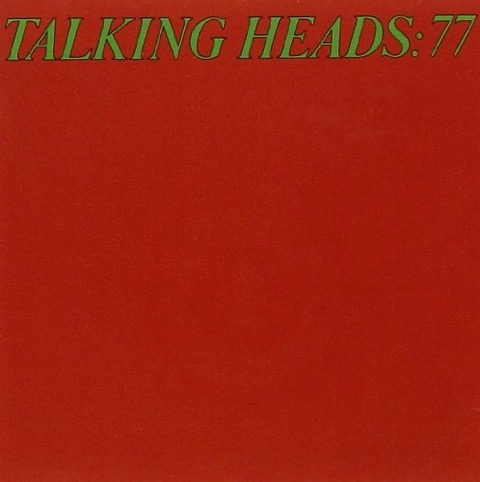
An expanded, newly issued edition of Talking Heads:77 offers a fresh look at this frequently electrifying album. The first of its three CDs delivers a remaster of the original LP while a second includes a dozen so-called “rarities,” though all but two of them have been featured on earlier records. A third CD contains the quartet’s previously unreleased final concert at New York’s famous CBGB club, which took place on Oct. 10, 1977. The package also embraces a Blu-ray disc with surround-sound, hi-res stereo, and Dolby Atmos mixes of the remastered original album, plus a copiously illustrated 80-page hardcover book with essays by all four group members and recording engineer Ed Stasium.
If you don’t already own Talking Heads:77 – which sounds as vital as ever nearly half a century after its release – buying this box set should be a no-brainer. Even if you have the original album and many of the ostensible rarities, however, there are at least two compelling reasons to pick this up. One is the Blu-ray, whose surround-sound tracks add significantly to the power of the music. The other is the CBGB concert, which features fired-up performances of eight of the 11 numbers on Talking Heads:77 plus “(Love Goes to) Building on Fire,” a single that came out before that debut LP; three tracks that would show up on 1978’s More Songs about Buildings and Food, including the Green cover; and “A Clean Break (Let’s Work),” a number that also appears on the 1982 live set called The Name of This Band Is Talking Heads.
Also Noteworthy
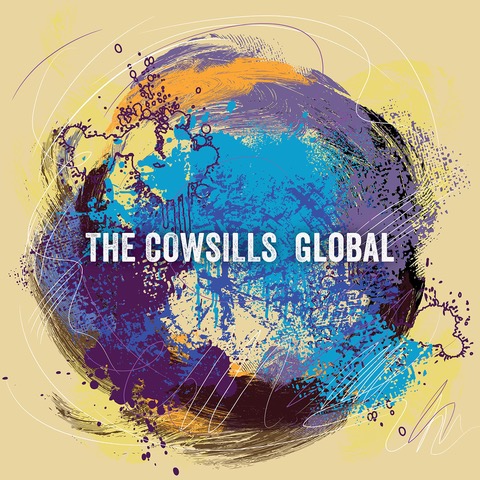
The Cowsills, Global. If you associate the Cowsills only with their bubblegum hits of the 1960s, such as “The Rain, the Park & Other Things,” “Hair,” and “Indian Lake,” you’re in for a surprise. The group’s members grew up, musically and literally, decades ago and went on to play roles in such excellent bands as the Blue Shadows (the late Billy Cowsill), the Beach Boys (John Cowsill), and the Continental Drifters (Susan Cowsill). As for the Cowsills, in 2022 they released Rhythm of the World, their first all-new album in about 30 years. And now we have an expanded version of Global, a CD that first appeared in limited quantities in 1998. It features Bob, John, Paul, and Susan Cowsill plus bassist Robby Scharf and such guests as the dB’s’ Peter Holsapple and the Bangles’ Vicki Peterson (who is married to John Cowsill).
The obvious reference point for this music is Fleetwood Mac, especially the two blockbuster albums that that group issued shortly after Lindsey Buckingham and Stevie Nicks joined up. Like the music on those Mac LPs, Global’s pop-rockers are upbeat, rhythmic, well-hooked, loaded with male/female harmony vocals, and focused on the trials and joys of romantic relationships. Granted, nothing here is quite as striking as Fleetwood Mac and Rumours. That said, Global’s tracks are consistently likable, accessible, and well-stocked with ear candy.
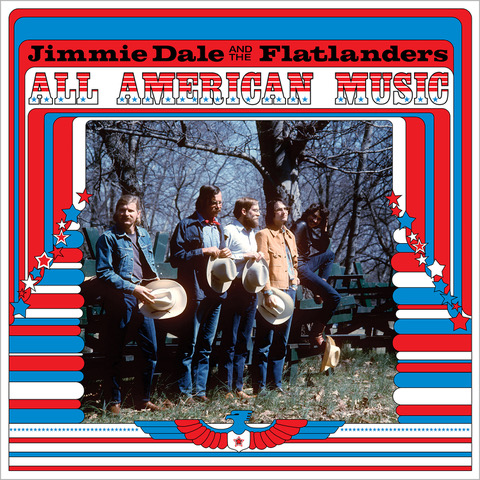
Jimmie Dale & the Flatlanders, All American Music. Lead vocalist Jimmie Dale Gilmore gets top billing on this collection from the short-lived but long-loved Flatlanders, a group that also featured guitarists Joe Ely and Butch Hancock as well as Steve Wesson (musical saw, autoharp), Tommy Hancock (fiddle), Sylvester Rice (upright bass), and Tony Pearson (mandolin). Recorded in 1972, All American Music originally appeared only in extremely limited numbers and just on eight-track tape. Most of its material has since resurfaced on compilations, including 1990’s More a Legend than a Band, but this new release apparently represents the first time all 18 numbers from the sessions have been gathered in one place.
Fans of acoustic traditional country music should waste no time in grabbing a copy of the album, whose influential performances predate the alt-country movement. Gilmore’s vocals are a joy, and so is the program, which is highlighted by two of his now-classic compositions, “Dallas” and the poignant “Tonight I Think I’m Gonna Go Downtown.” Also featured are four songs by Butch Hancock and covers of tunes such as Jimmie Rodgers’s “Waiting for a Train,” Harry Choates’s “Jole Blon,” A.P. Carter’s “Hello Stranger,” and Willie Nelson’s “One Day at a Time.”
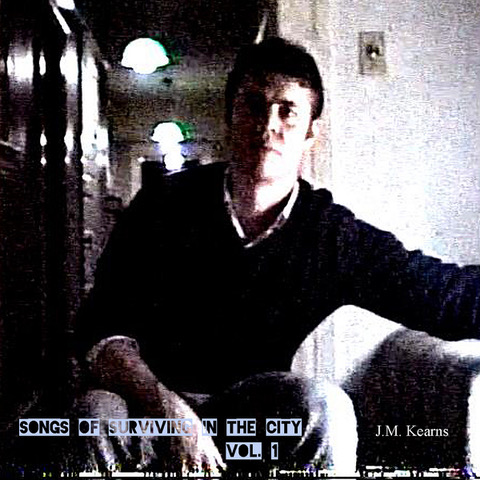
J.M. Kearns, Songs of Surviving in the City. New Jersey–based folk singer J.M. Kearns was in his seventies when he released his debut album, Before the Coffee Gets Too Cold, in May 2024. He might regret that it took him so long but the good news for him was that by the time he made the record, he had decades of experiences to draw on for his lyrics, including the many years he spent struggling to succeed in the music business.
Making up for lost time, he’s already back with an amiable and thought-provoking sophomore release. As its monicker and song titles such as “Living on the Edge” suggest, he’s again often writing about the hard times he’s experienced. In “Endless Night,” for example, he sings about what his mother must have been feeling after his father died. According to Kearns, meanwhile, “Bureaucrat in the Snow” was inspired by the years he spent working in a law firm and suggests how “the corporate world…regiments one’s soul.” He draws on older memories for one of the album’s best songs, “The End of the World,” which concerns his childhood love of the 1963 Skeeter Davis hit of the same name.
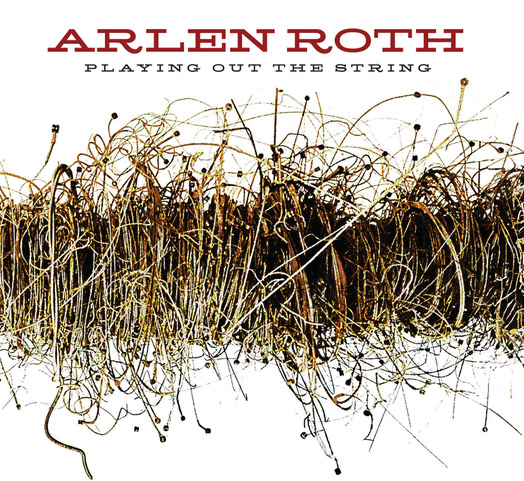
Arlen Roth, Playing Out the String. Acoustic guitarist Arlen Roth has worked with many rock, pop, folk, and blues artists and, in 2022, he collaborated with the Lovin’ Spoonful’s frontman on John Sebastian and Arlen Roth Explore the Spoonful Songbook. On the new Playing Out the String, however, Roth works mostly alone, though his co-producer, Alex Salzman, adds some keyboard parts. This all-acoustic and mostly instrumental 20th solo album demonstrates Roth’s guitar virtuosity and his ability to get to the heart of material from a wide range of genres.
The bluesy title cut is a Roth original while the album’s other 10 tracks are well-chosen covers. Among them are “Walk Right In,” the old folk/blues tune that gave the Rooftop Singers a No. 1 hit in 1963; Fred Neil’s wonderful “Everybody’s Talkin’,” which is best known via Nilsson’s rendition; Townes Van Zandt’s folk classic, “Pancho and Lefty”; Roy Orbison’s gorgeous “Blue Bayou”; and Willie Dixon and Bo Diddley’s playful “Diddy Wah Diddy.”
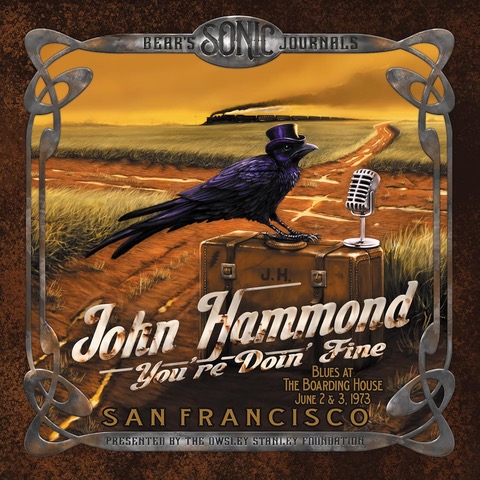
John Hammond, Bear’s Sonic Journals: You’re Doin’ Fine — Blues at the Boarding House, June 2 & 3, 1973. Besides famously producing large quantities of LSD, the late Owsley Stanley (aka Bear) was known for recording rock concerts. His foundation has released some of them on CD in recent years, including shows by Tim Buckley, Johnny Cash, and the Chieftains. The latest in this series preserves a two-night 1973 stand at San Francisco’s Boarding House by blues singer and guitarist John Hammond (who is sometimes referred to as John Paul Hammond or John Hammond, Jr., to distinguish him from his late father, John H. Hammond, the famed producer).
The three-disc recording offers 45 tracks and more than three hours of solo performances that embrace compositions by many blues giants, among them Robert Johnson, Lightnin’ Hopkins, Elmore James, Willie Dixon, Slim Harpo, Blind Boy Fuller, Muddy Waters, Howlin’ Wolf, John Lee Hooker, and Son House. Hammond’s guitar pyrotechnics are on full display throughout the set, which comes with a 60-page booklet that contains extensive interviews with him. Also featured are contributions by admirers Tom Waits, who opened for Hammond at the featured concerts, and Jorma Kaukonen.
On the Bookshelf
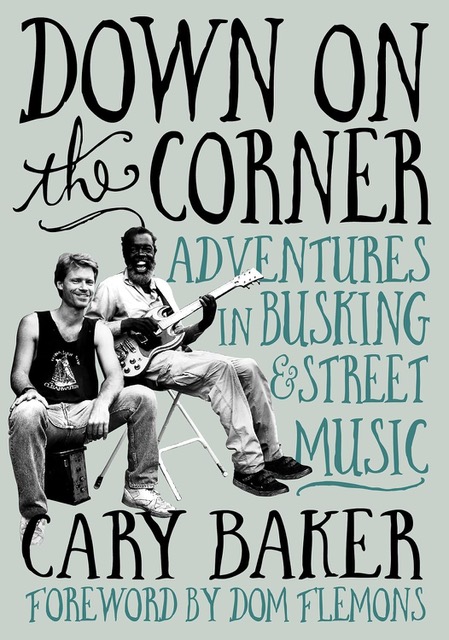
Down on the Corner: Adventures in Busking & Street Music by Cary Baker. Cary Baker, who spent decades as a music publicist, has long been known in the business for his writing ability, encyclopedic knowledge of the field, and penchant for limiting his client list to artists whose work he admires. It’s no surprise, then, that his first post-retirement project is a well-researched, colorfully written, and insightful music book that conveys enthusiasm and resulted from years of research and dozens of interviews.
The focus is street singing, aka busking, which Baker says he first encountered around 1970 when his father took him to an open-air flea market near downtown Chicago. There, he heard a blues singer named Blind Arvella Gray and “developed a lifelong affinity for the informality, spontaneity, and audience participation of busking.”
In his book, Baker covers a wide variety of musical genres and features artists who became famous as well as those who spent their entire careers playing for tips on sidewalks and subway platforms and in parks. The volume begins with chapters on the origins of busking that cover topics ranging from prewar bluesmen to the rise of doo-wop. Next come sections on street singing in various regions: the East Coast (Ramblin’ Jack Elliott, Moondog, David Peel & the Lower East Side, and more), the South and Midwest (Lucinda Williams and Violent Femmes, among others), California (including Frank Zappa protégé Wild Man Fischer), and Europe (Elvis Costello, etc.).
Baker leaves few stones unturned, but as he suggests at the end of the book, he didn’t include all the worthy candidates for coverage. “If you’re wondering ‘but where is…?’ I’ve probably already thought of that musician [and] I’m keeping a running list for volume two,” he writes. After reading Down on the Corner, you’ll likely be looking forward to that sequel.
Jeff Burger’s website, byjeffburger.com, contains five decades’ worth of music reviews, interviews, and commentary. His books include Dylan on Dylan: Interviews and Encounters, Lennon on Lennon: Conversations with John Lennon, Leonard Cohen on Leonard Cohen: Interviews and Encounters, and Springsteen on Springsteen: Interviews, Speeches, and Encounters.


